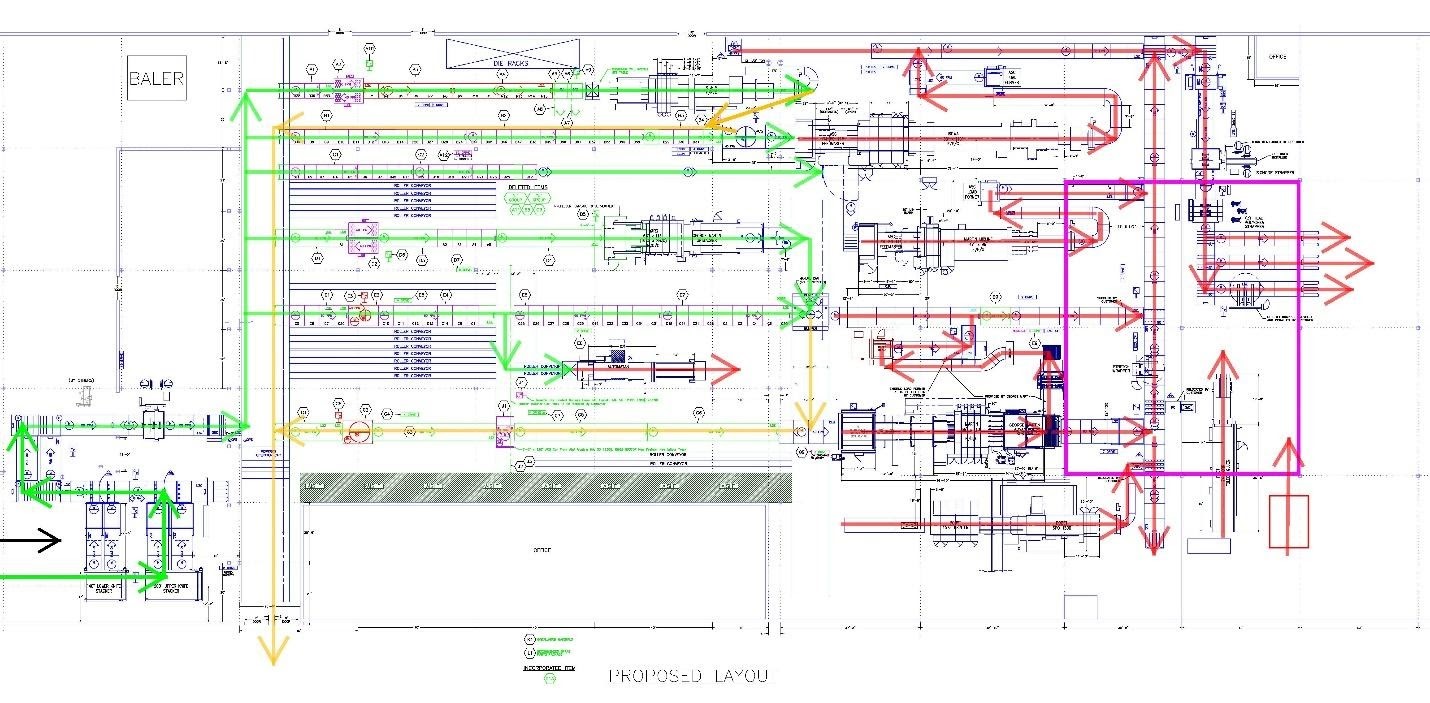Keeping Your Clients in Business While the Repairs Progress
Have you ever arrived at a large loss site and wondered, “how are we going to help this client keep business while repairs progress?”
Well, that’s where a scope of damage consulting engineer with a facilities/process/production background helps. When I arrive at a large site, I first build a mental map of what’s going on. If a facility or process layout is available, that helps, but I’ll sketch my own if I need to. Process Flow Diagrams (PFD) and Piping & Instrumentation Diagrams (P&ID) can help too, but again I’ll sketch my own. Working with the plant personnel to understand what’s being made and the process or production flow helps with determining if partial production can be restored.
In the example below, a production facility received raw material at the bottom left corner. Production flowed (follow arrows) through the facility to shipping on the right side. A roof cave-in due to snow accumulation (pink box) damaged critical equipment and opened the building envelope rendering the facility down. A review of the facility with the operators determined that the flow of the production represented by green arrows was unaffected, but the flow represented by red arrows was not usable.

The solution was to purchase some extra parts/material and reroute a portion of the production flow as shown by the yellow arrows. This allowed the operators to get partial production up and running while repairs were conducted to the roof and damaged machinery. A temporary wall, around the open area while roof repairs took place, allowed the internal environment to be reasonable (this was in winter).
Not visible in the flow sketch is the planning done to reroute power that went through the damaged area so the other equipment could run. A scope of damage consulting engineer with a facilities and process/production background can give you peace of mind that the insured and their contractors are making reasonable choices in the chaotic environment right after the loss occurs.
While not “perfect,” the solutions above allowed the insured to keep about half its staff employed while servicing its most important clients. After repair of the roof and equipment, the facility resumed full production. Plus, it had better systems resiliency as a result of good work-around choices during the efforts to provide partial production.
About the Author
Kenneth S. Marshall, P.E., MBA is President of EDT and has 30+ years of experience with many types of capital equipment and production facilities. He is located in our Cleveland, OH Office. EDT has engineers that provide consultation on industrial, commercial and residential incidents involving all types of equipment/machinery, buildings, processes, and marine. EDT services include origin and cause, failure analysis, and damage assessment. You may contact Ken for assistance in finding the best EDT engineer for your forensic engineering needs at ksmarshall@edtengineers.com or (440) 239-0362.
Learn about how EDT Forensic Engineering & Consulting approaches construction assessments, scope of damage, and forensic engineering by assigning a file today.

